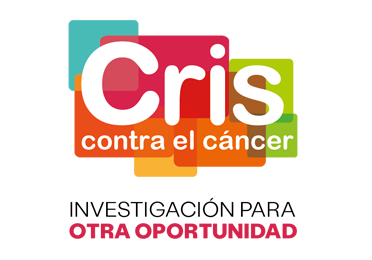➢ The combination of chemotherapy and selective therapy with trastuzumab has for the very first time been shown as an effective strategy in combating a subtype of HER2+ breast cancer which accounts for approximately 10% of all breast cancer cases.
➢ The study, led by the VHIO and supported through a grant received from the Spanish Association against Cancer (AECC), has successfully translated pre-clinical research into potential benefit at patient level.
Barcelona, October 13, 2014. Research led by Joaquín Arribas, Principal Investigator of the Vall d´Hebron Institute of Oncology´s (VHIO) Growth Factors Group, Director of Preclinical Research at VHIO, and ICREA Professor, has shown the combined strategy of chemotherapy plus trastuzumab (a selective therapy against HER2 receptors), as effective in reducing tumors of a specific HER2+ breast cancer subtype known as p95HER2. Recently published in the Journal of the National Cancer Institute (JNCI), this study signposts new therapeutic promise for patients with p95HER2-positive breast tumors, since, up until now, this subgroup has proven highly resistant to therapy. Funded through support received from the Spanish Association against Cancer (AECC), this research has also been carried out in collaboration with Atanasio Pandiella from the Cancer Research Center of Salamanca (CIC) and other organizations including the Breast Cancer Research Foundation (BCRF).
Patients with p95HER2-positive breast tumors account for between 8-10% of all breast cancer cases. These tumors are difficult to treat because they are resistant to trastuzumab, the most commonly used drug to treat HER2+ breast cancer. Arribas´ latest research demonstrates that by combining standard chemotherapy to the treatment regimen of these patients, which alone is not effective, the sensitivity of p95HER2-positive tumors to trastuzumab increases and, as a result, the chemotherapy and trastuzumab ´duo´ proves effective in reducing these tumors.
In order to understand why the two treatments, neither of which work on their own, are so effective when administered in combination, Joaquin´s group analyzed human tumor samples and followed their evolution in mouse ‘avatars’ – mouse models that faithfully recapitulate the actual tumors of the patients studied. As such, these mice are evaluated not only in terms of how the tumor responds in the short term, but also in terms of expected response in the future. The group observed that chemotherapy helps to accumulate the HER2 receptors in the cell membrane, thereby exposing them to the drug and, as a result, enabling trastuzumab to easily act on these tumor cells.
“All of these findings already show promise at clinical level. We are now conducting a clinical trial to ensure that all the results that we have seen at laboratory level can be applied to clinical practice. We are confident that we will see improved response to therapy as well as provide an alternative for this subgroup of patients who did not respond to existing treatment modalities”, said Arribas.
Supported by funding the Spanish Association against Cancer (AECC), Joaquín and his group conduct studies aimed at identifying the mechanisms of resistance against anti-HER2 treatments to ultimately both design new therapies that counteract said mechanisms as well as identify novel therapeutic alternatives for this subgroup of particularly aggressive tumors. The fruits of these efforts can now be seen in the present results and in the promise of the clinical trial currently under study.
###
For more information please contact Amanda Wren, Communication Manager, the Vall d’Hebron Institute of Oncology (VHIO),Tel. +34 695 207 866 awren@vhio.net











